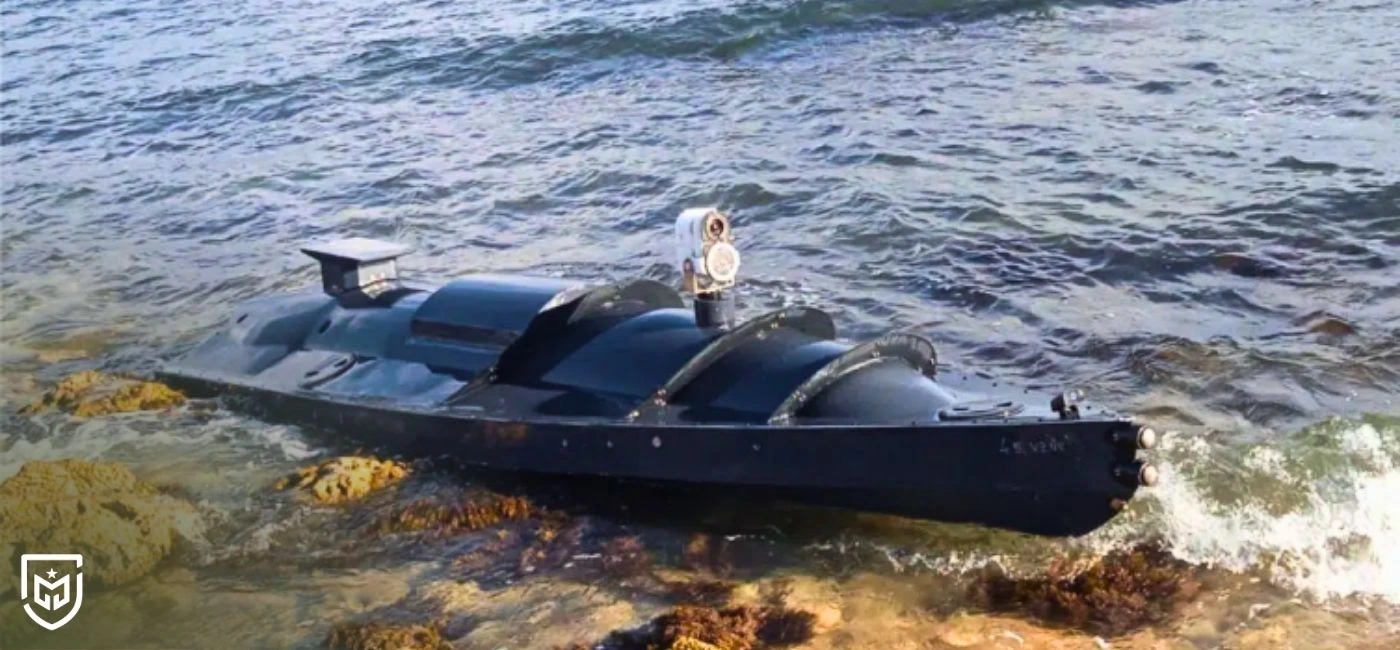

BREAKING NEWS

The Russia–Ukraine war continues to reshape modern combat doctrines, introducing hybrid tactics that merge air, land, and maritime domains. The most recent development is the launch of FPV (First Person View) drones from unmanned surface vessels (USVs)—a tactic never before observed in active combat. Video footage from Ukrainian sources showed multiple FPV drones taking off from a naval drone approaching Russian targets at sea, marking the emergence of an entirely new operational concept in maritime warfare.
Traditionally, Ukraine’s USVs have been used as kamikaze platforms against Russian warships and naval installations. This time, however, the sea drone acted as a mobile launch pad, deploying a swarm of FPV drones that proceeded to strike targets from the air. This two-phase attack method—first approaching by sea, then transitioning to aerial assault—creates a multi-dimensional challenge for defenders. FPV drones are small, fast, and difficult to detect by conventional radar systems, particularly when deployed in swarms, making them a cost-effective but highly disruptive threat to expensive naval assets.
The implications are profound. By using low-cost drones to neutralize high-value ships or coastal defenses, attackers can cause disproportionate damage while keeping operators safely remote from combat zones. The method also reduces logistical risk and allows rapid replication. For defensive forces, however, this tactic poses serious questions. Conventional naval radars struggle to detect low-flying, low-signature drones, and installing specialized counter-drone sensors on small vessels is not always feasible. As a result, fast patrol boats, corvettes, and support vessels could become vulnerable unless countermeasures are urgently integrated.
For Türkiye, which has advanced capabilities in both unmanned surface vehicles (such as ULAQ and MARLIN) and FPV drone technology, this development highlights both risk and opportunity. The ability to combine these platforms could enable Türkiye to pioneer similar integrated systems or, conversely, to develop robust naval counter-drone solutions—including electronic warfare, AI-based detection, and directed-energy defenses—for domestic and export markets. Such innovations would not only safeguard national interests but also enhance Türkiye’s position as a global defense technology leader in unmanned warfare.
The era of FPV swarms launched from the sea has begun. As naval and defense experts warn, this new reality demands adaptive doctrine, faster detection systems, and layered defensive measures. Nations that innovate quickly will dominate tomorrow’s hybrid battlefields—both at sea and beyond.
Post Comment
Comments
No comments yet.
Related News
Leonardo Signs Multi-Year Support Agreement for Italian C-27J Spartan Fleet
Ukraine Officially Receives Homegrown Flamingo Long-Range Cruise Missiles
Turkey–Hungary Defense Cooperation Expands: Gidran Production and New Joint Projects Accelerate
A New Era in the Black Sea: Türkiye Delivers Historic MILGEM Export to Romania
Historic Joint Operation Success from Bayraktar TB3 and Albatros-S in the Blue Homeland
Turkey’s Defense and Aerospace Industry Breaks Export Record with $7.4 Billion in 11 Months
Türkiye’s National Air Platforms Continue Their Rise in Africa with 14 Contracts Across 7 Countries
Turkish RF Jammer Technology to Protect UN Armored Vehicles in African Operations